College of Science, Engineering & Technology
"The quest for women's equality is a marathon and each one of us have a lap to run"
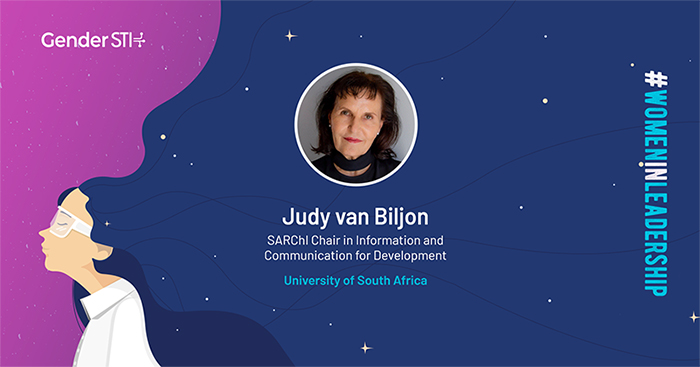
Judy van Biljon was nominated for Gender STI’s #WomenInLeadership Campaign, which celebrates women leaders in science, technology and innovation, by the Council for Scientific and Industrial Research in South Africa.
She is a Professor of Information Systems and holds the National Research Foundation’s Chair in Information and Communication for Development hosted by the School of Computing at the University of South Africa (Unisa). Van Biljon has contributed to the body of academic knowledge by publishing on Human-Computer Interaction evaluation and interaction design for marginalised groups, technology adoption, and sustainability in digital learning for resource-constrained environments.
Van Biljon spoke to Gender STI about her experience as a woman leader in honour of International Women’s Day 2021.
Can you tell us a bit about your job and your responsibilities?
As the South African Research Chair in Information and Communication Technology (ICT) for Development my job is to expand the scientific research and innovation capacity in the sustainable use of ICT’s. My research involves user-centered design and the evaluation of context-sensitive technologies for online teaching and learning. The research is conducted in collaboration with postgraduate students. The capacity building initiatives support collaboration between researchers from the Global South and other parts of the world and includes a digital knowledge repository, the hosting of international research conferences and the establishment of student research networks such as the Southern African Chapter of the International Network for Postgraduate Students in the area of ICT4D (IPID).
Did you face any challenges on your journey to become a woman leader? How did you overcome them?
All career minded women have to balance their drive to succeed professionally with personal and family commitments. At a stage, my family obligations limited my career options but completing a PhD while earning a living as a single mother taught me to multi-task and to distinguish between what is important and what is urgent. My motto: This will not beat me; it will make me stronger!
What goals do you have as a leader?
To see hidden potential in people and connect that to a vision, to support them in realizing that potential and then to stand back so that they own the vision. This involves observing people’s aspirations, making them aware of their capabilities and helping them to overcome their actual and perceived limitations. Inspire to aspire to greatness.
How would you describe the gender balance in decision making in science, technology and innovation (STI)?
Gendered power imbalances are centuries in the making and lie deep within our social fabric. The quest for women’s equality is a marathon, not a sprint and each one of us have a lap to run in this equality relay race. The contribution lies in receiving the baton, competing hard to close the gap and then leaving the next woman competitor in a better position. We may not achieve equality in our time, but we will forever be part of the women who contributed towards equality in science, technology and innovation.
What would you tell young girls and women who would like to become leaders in their professional fields one day?
Find your passion and the knowledge weapons required for your quest, practice your skills in using those weapons and apply them innovatively. Develop your content knowledge; that will grow your confidence and ensure that you are respected in your leadership position. Balance the bigger picture with attention to detail, the needs of the group with individual support and final achievement with interim survival.
As you may know, the Gender STI project focuses on promoting gender equality in international cooperation in STI. Do you have any ideas on how we could promote gender equality in this area?
Cooperation is often conceived at managerial levels, but it occurs on the individual level. Strong and sustainable cooperation develops bottom up through personal connections. Woman often lack opportunities to make those connections, so allow people from all genders to meet and collaborate on small projects in a round-robin way. Connections will form and the sustainable connections will endure.
What do you think needs to be done to increase the number of women leaders in STI?
Firstly, growing the number of women entering the STI field; secondly, encourage woman leaders in STI to engage as mentors. Role models are imperative in increasing the number of women leaders in STI.
Follow Gender STI’s #WomenInLeadership campaign on Twitter, LinkedIn and Facebook for more great interviews. Join the conversation using #WomenInLeadership, #IWD2021 and #GenderSTI.
This article first appeared on Gender STI on 8 March 2021 and is used by permission. You can read the original here.
Publish date: 2021-03-09 00:00:00.0


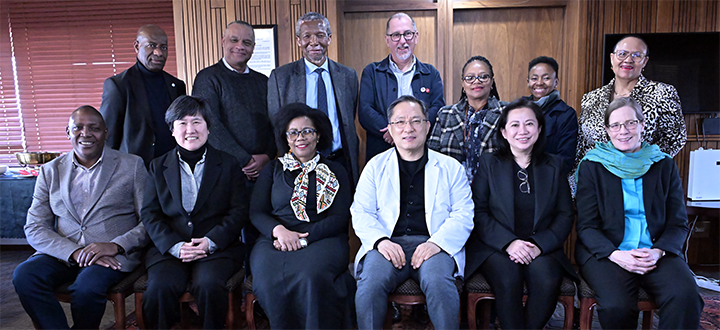 Unisa wins bid to host IAMS General Assembly
Unisa wins bid to host IAMS General Assembly
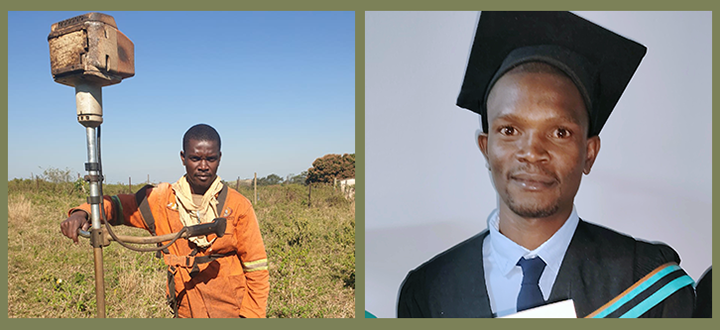 Cutting grass by day, pursuing Unisa studies by night
Cutting grass by day, pursuing Unisa studies by night
 Unisan’s research set to improve accident records management through AI
Unisan’s research set to improve accident records management through AI
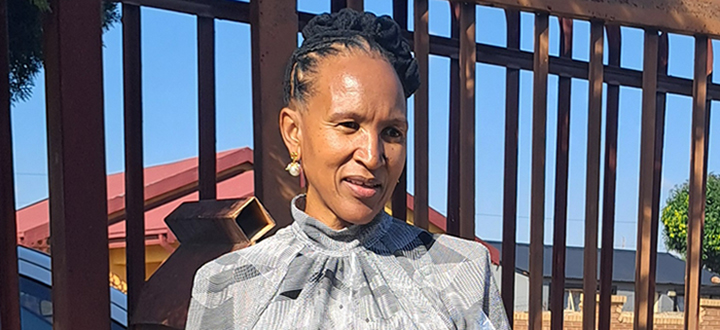 Koma e wetse: When tradition meets the harsh realities of modern livelihoods
Koma e wetse: When tradition meets the harsh realities of modern livelihoods
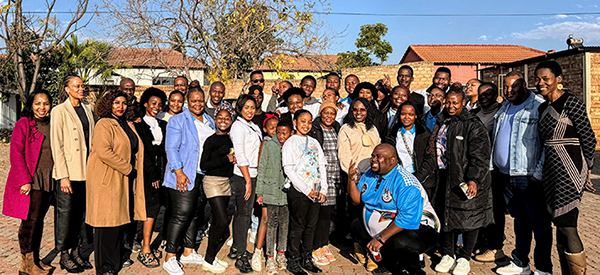 Imbizo inspires youth
Imbizo inspires youth